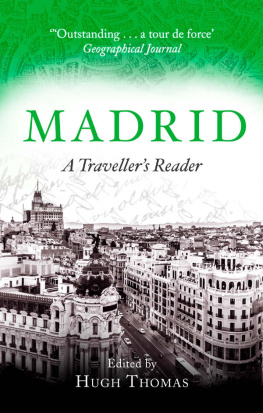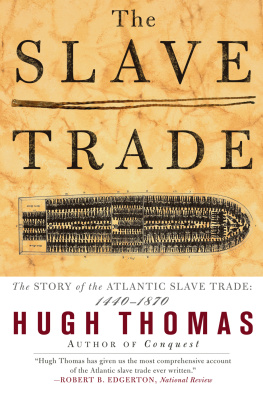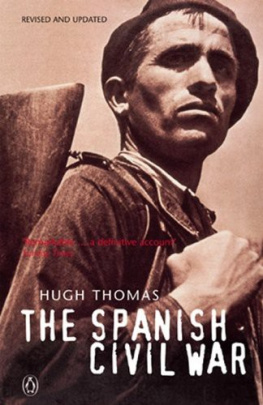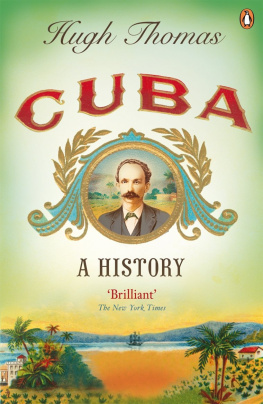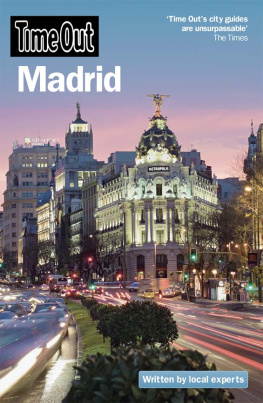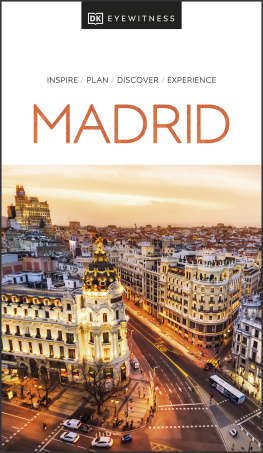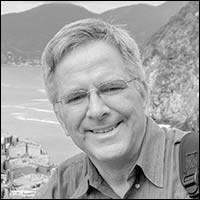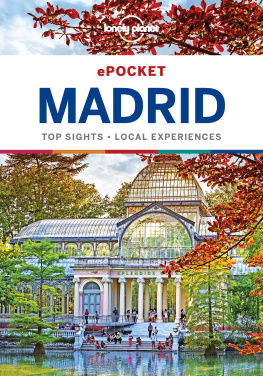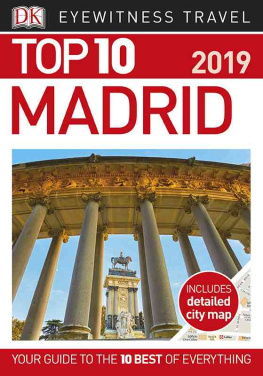Hugh Thomas was an English historian, writer and life peer in The House of Lords. Best known for The Spanish Civil War (1961), for which he won the Somerset Maugham Award, Thomas wrote a number of political works and histories. By the end of his life, Thomas had been appointed Commander of the Order of Arts and Letters by the French government, and received the Grand Cross of the Royal Order of Isabella the Catholic from Spain as well as the Mexican Order of the Aztec Eagle.
Other titles in the series
Moscow: A Travellers Reader
Laurence Kelly
Istanbul: A Travellers Reader
Laurence Kelly
Venice: A Travellers Reader
John Julius Norwich
Edinburgh: A Travellers Reader
David Daiches
St Petersburg: A Travellers Reader
Laurence Kelly
Prague: A Travellers Reader
Jan Kaplan

ROBINSON
First published in Great Britain as Madrid: A Travellers Companion by Constable and Co. Ltd, 1988 Revised edition published by Robinson, an imprint of Constable & Robinson Ltd., 2002 This edition published in 2018 by Robinson
Copyright Hugh Thomas, 1988, 2005
The moral right of the author has been asserted.
All rights reserved.
No part of this publication may be reproduced, stored in a retrieval system, or transmitted, in any form, or by any means, without the prior permission in writing of the publisher, nor be otherwise circulated in any form of binding or cover other than that in which it is published and without a similar condition including this condition being imposed on the subsequent purchaser.
A CIP catalogue record for this book
is available from the British Library.
Every effort has been made to trace and contact copyright holders. If there are any inadvertent omissions we apologise to those concerned, and ask that you contact us so that we can correct any oversight as soon as possible.
ISBN: 978-1-4087-1031-9
Robinson
An imprint of
Little, Brown Book Group
Carmelite House
50 Victoria Embankment
London EC4Y 0DZ
An Hachette UK Company
www.hachette.co.uk
www.littlebrown.co.uk
This book is dedicated to all my friends in Madrid,
particularly the hall-porters of
the Victoria, Palace and Ritz Hotels
Contents

LIFE, CUSTOMS AND
MORALS IN MADRID


I wish to express my gratitude to Mara and Gregorio Maran y Beltrn de Ls, for much hospitality; to Ramn Tamames, for lending me books; to Fernando Chueca for several good ideas; to Carlos Zayas, with whom I first walked the magic streets of old Madrid thirty years ago; to Hermann and Gerda Miessner, whose bookshop was for years a university in miniature; to Dolores and Tom Burns y Maran, Paco Cuadras, Pedro J. Ramrez, Juan Toms de Salas, Pedro Schwartz, and many madrileos of vision, wit and intelligence. Roger Lockyer helped me in relation to the visit of the Prince of Wales to Madrid (1623) and Ian Gibson reminded me of Dals cocktail.
I am also grateful to the patient and efficient staff of the London Library; and the dedicated assistants in the most beautiful library in Europe, the round reading room of the British Museum. I am also grateful for the help of Carmen Herrera Valverde of the Museo Municipal in Madrid. Finally, I thank Prudence Fay of Constable for her patience, industry and skill, and Vanessa and Isambard Thomas for their work on translations from the French. The translations from the Spanish were done by the Editor, but he was much assisted by Ana Schwartz. She did the poems.
I should like to make acknowledgement to the following for permission to quote from their writings, editions or translations, where copyright permission was needed:
The Centro de Estudios Constitucionales for Fernando Daz Plajas La Historia de Espaa en sus documentos; A.M. Heath and the Estate of Arthur Machen for Memoirs of Casanova; A.D. Peters & Co and V.S. Pritchett for The Spanish Temper; Editorial Prensa Espaola for Julin Corts Cavanillas Alfonso XIII and Agustn de Foxs Madrid de corte a checa; to Sir Harold Acton and Hamish Hamilton for Memoirs of an Aesthete; to Yale University Press for Jonathan Brown and J.H. Elliotts A Palace for a King: the Buen Retiro and the Court of Philip IV; Longman for Cynthia Coxs The Real Figaro; Plaza y Jans for Luis Buuels Mi ltimo suspiro; Ediciones Pegaso for Melchor Fernndez Almagros Historia Poltica de la Espaa Contempornea; Espasa Calpe for Po Barojas Aurora Roja, Desde la ltima vuelta del camino and Las noches del Buen Retiro, for Jos Garca Mercadals Viajes de extranjeros por Espaa y Portugal, and for Gregorio Marans Antonio Prez; the Estate of Manuel Azaa for his Obras Completas; Michael Joseph for General Sir John Aitchisons An ensign in the Peninsular War, edited by W.F.K. Thompson; Jonathan Cape, Scribner and the Estate of Ernest Hemingway for Death in the Afternoon; James Lees Milne and Chatto & Windus for Harold Nicolson, a biography; Le Divan for Prosper Mrimes Correspondence Gnrale; Jonathan Cape for John Nadas Carlos the Bewitched; Weidenfeld & Nicolson for Prez Galdoss Torment, translated by J.M. Cohen; Penguin for Francisco de Quevedos The Swindler, translated by Michael Alpert; Allied Publishers, Bombay for M.N. Roys Memoirs; Darton, Longman Todd for M.H. Vicaires Saint Dominic and his Times, translated by Kathleen Pond; Harvard University Press for Rubens Letters, translated by Ruth Saunders; Ediciones Turner for Cartas de Francisco Goya a Martn Zapater by Mercedes gueda and Xavier de Salas; the Estate of Miguel Maura for As Cay Alfonso XIII; the Estate of Ramn Sender, and Sir Peter Chalmers Mitchell, for Seven Red Sundays; Vision Press for Salvador Dals My Secret Life; Macmillan Publishing Co. and Dodd, Mead for Nina Eptons Madrid; the Estate of Gamel Woolsey for The Spendthrifts; Alianza Editorial for S. Ramn y Cajals historia de mi labor cientfica; and the Estate of Arturo Barea for The Forging of a Rebel, translated by Ilse Barea.

(In this introductory essay I have anglicized the names of kings (Charles III, not Carlos III) but not others (Juan de Villanueva, not John). I have rendered La Virgen de as Our Lady of. Spanish words frequently used are: calle (street); Conde (Count); convento (nunnery or monastery); Duque, Duquesa (Duke, Duchess); Marqus, Marquesa (Marquis, Marchioness); palacio (palace); paseo (walk or promenade); plaza (square); and puerta (gate). The numbers in square brackets dotted about the Introduction indicate the extract which illustrates the point made, e.g. [].)
1
In the summer of 1561, King Philip II travelled from Toledo, the ancient Visigothic capital of Spain, and established his court in Madrid. His father, the Emperor, Charles V, who had died three years before, at the Jeronomite monastery of Yuste in the Gredos mountains, nearly 150 miles west of Madrid, had advised Philip to make a stationary court, not the nomadic one which he had himself had, in common with the Spanish kings of the Reconquista. The Spanish Empire, the most ambitious political enterprise which the world had seen since the fall of Rome, needed sound administration: a capital to which despatches could be sent regularly, and where they would be at hand. King Philip had won his French wars, had married the French princess Elizabeth (not Elizabeth of England, as he had proposed), and needed to settle down. When a few years later one of his admirals offered to conquer China for him, if only he could receive another 20,000 men, Philip was unenthusiastic. Not for nothing was he called the prudent king.
Next page
